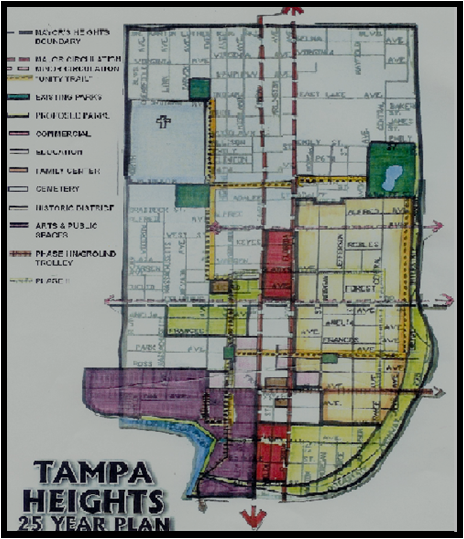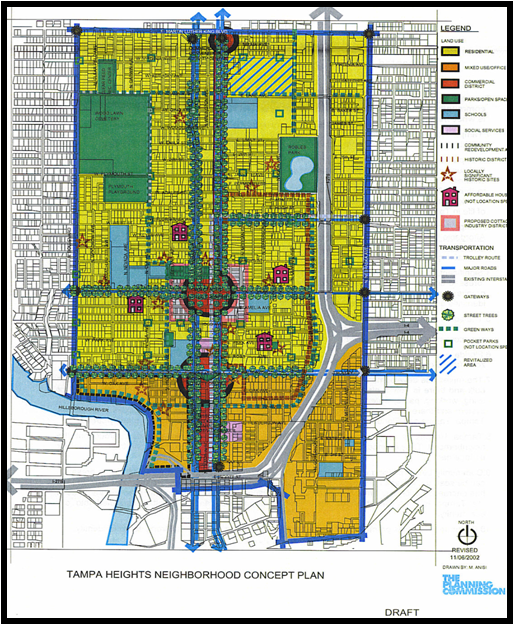- Home
- Tampa Heights Neighborhood Plan
Tampa Heights Neighborhood Plan
The Tampa Height Neighborhood Plan was the first Community Development Plan which was ratified by the City of Tampa and was a more than 3 year process that began in 1999 when residents led by the Tampa Heights Civic Association and other community leaders like CFCPD President Carrol Josephs-Marshall. The plan was born out of residents fear that large-scale projects and redevelopment plans would result in the erosion of the historic fabric of the neighborhood, destroy the grid pattern of the neighborhood and continue the displacement of current residents.
The Tampa Heights Neighborhood plan is a general guide which provides a tool kit of activities and recommended guidelines that may be used to achieve the realization of community that is described in the Vision document.
The Tampa Heights plan has seven primary objectives or themes:
• Rebuilds community by recommending specific initiatives that reinforce the values of the Vision for Tampa Heights and builds on the existing social and human Capital;
• Provides a plan that is tailored to neighborhood scale and conditions;
• Proposes an economic development plan;
• Creates a comprehensive, coordinated, strategic plan to benefit Tampa Heights shareholders
• Focuses on a community driven plan with broad resident involvement;
• Organizes neighborhood residents and organizations to be an effective force in advocating for the neighborhood;
• Recommends a collaborative implementation strategy.
The Planning Commission was asked by the city of Tampa to assist in the development of a neighborhood plan. In the Planning process, we have acknowledged an existing community dynamic, which we have attempted to enhance through this plan.
The planning process has utilized a variety of resources in the community to confirm what the future of Tampa Heights should be. Of particular importance has been the outreach to community leaders, residents and business owners to articulate the strengths and weakness of the neighborhood which have been later substantiated by a citizen advisory committee. The advisory committee process as well as a series of larger community meetings have involved, at various times, over 200 residents and organizations.


